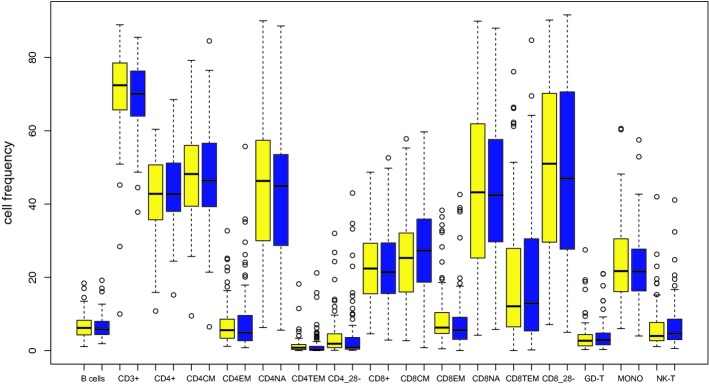Correction to: Mol Syst Biol (2013) 9: 659. DOI 10.1038/msb.2013.15 | Published online 16 April 2013
See also: previous corrigendum: Mol Syst Biol (2013) 9: 680. DOI 10.1038/msb.2013.37 | Published online 2 July 2013
Since the publication of the above article and the Corrigendum published on 2 July 2013, the authors have noted that cell frequency data used in the prediction models correspond to samples from day 28 ± 7 after vaccine administration and not pre-vaccination ones. To correct this, we have used stored samples from pre-vaccine blood draws and conducted cell subset frequency determination from all 89 individuals in this study, using the same antibody panel and gating strategy to that used in the original paper. We have conducted the corresponding comparison analyses, and there are no apparent discrepancies between the cell frequencies observed at day 0 vs day 28 ± 7 (P-values range from 0.25–0.98; the data are presented in the Figure). We have re-run the elastic net (Friedman et al, 2010) as described in the original paper (Figure 5) and found an increase in the accuracy of the prediction of the HAI response; AUC is now 0.86. We found no changes in variable selection; there is also a stable directionally of the regression coefficients, which vary < 2%. The frequency data for each cell subset before and after 28 days post-vaccination are shown in the Figure below.
Cell subset frequency determination.

Frequency data for each cell subset are shown before (yellow bars) or after 28 days post-vaccination (blue bars).
The authors would like to apologize for these errors.


